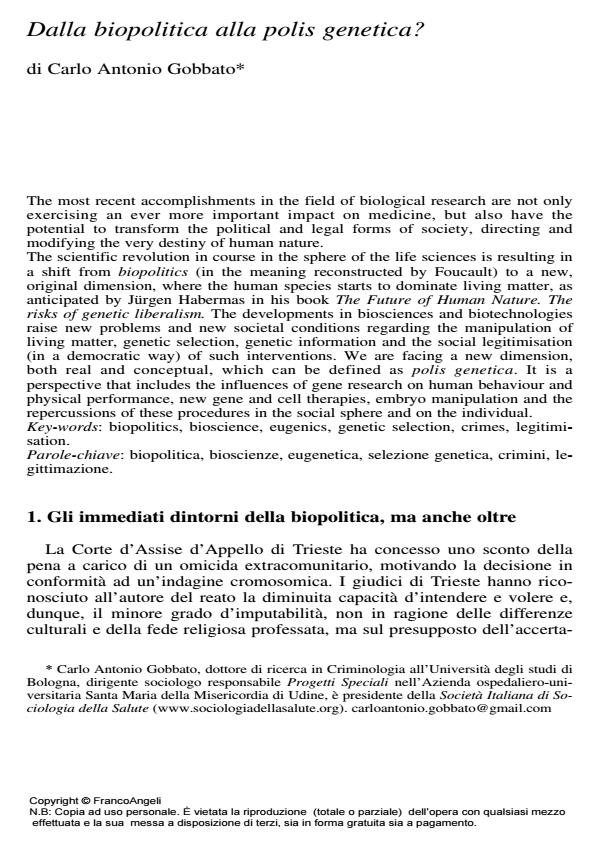From biopolitics to the polis genetica?
Journal title SALUTE E SOCIETÀ
Author/s Carlo Antonio Gobbato
Publishing Year 2010 Issue 2010/3
Language Italian Pages 27 P. 28-54 File size 328 KB
DOI 10.3280/SES2010-003004
DOI is like a bar code for intellectual property: to have more infomation
click here
Below, you can see the article first page
If you want to buy this article in PDF format, you can do it, following the instructions to buy download credits

FrancoAngeli is member of Publishers International Linking Association, Inc (PILA), a not-for-profit association which run the CrossRef service enabling links to and from online scholarly content.
The most recent accomplishments in the field of biological research are not only exercising an ever more important impact on medicine, but also have the potential to transform the political and legal forms of society, directing and modifying the very destiny of human nature. The scientific revolution in course in the sphere of the life sciences is resulting in a shift from biopolitics (in the meaning reconstructed by Foucault) to a new, original dimension, where the human species starts to dominate living matter, as anticipated by Jürgen Habermas in his book The Future of Human Nature. The risks of genetic liberalism. The developments in biosciences and biotechnologies raise new problems and new societal conditions regarding the manipulation of living matter, genetic selection, genetic information and the social legitimisation (in a democratic way) of such interventions. We are facing a new dimension, both real and conceptual, which can be defined as polis genetica. It is a perspective that includes the influences of gene research on human behaviour and physical performance, new gene and cell therapies, embryo manipulation and the repercussions of these procedures in the social sphere and on the individual.
Keywords: Biopolitics, bioscience, eugenics, genetic selection, crimes, legitimisation
Carlo Antonio Gobbato, Dalla biopolitica alla polis genetica? in "SALUTE E SOCIETÀ" 3/2010, pp 28-54, DOI: 10.3280/SES2010-003004